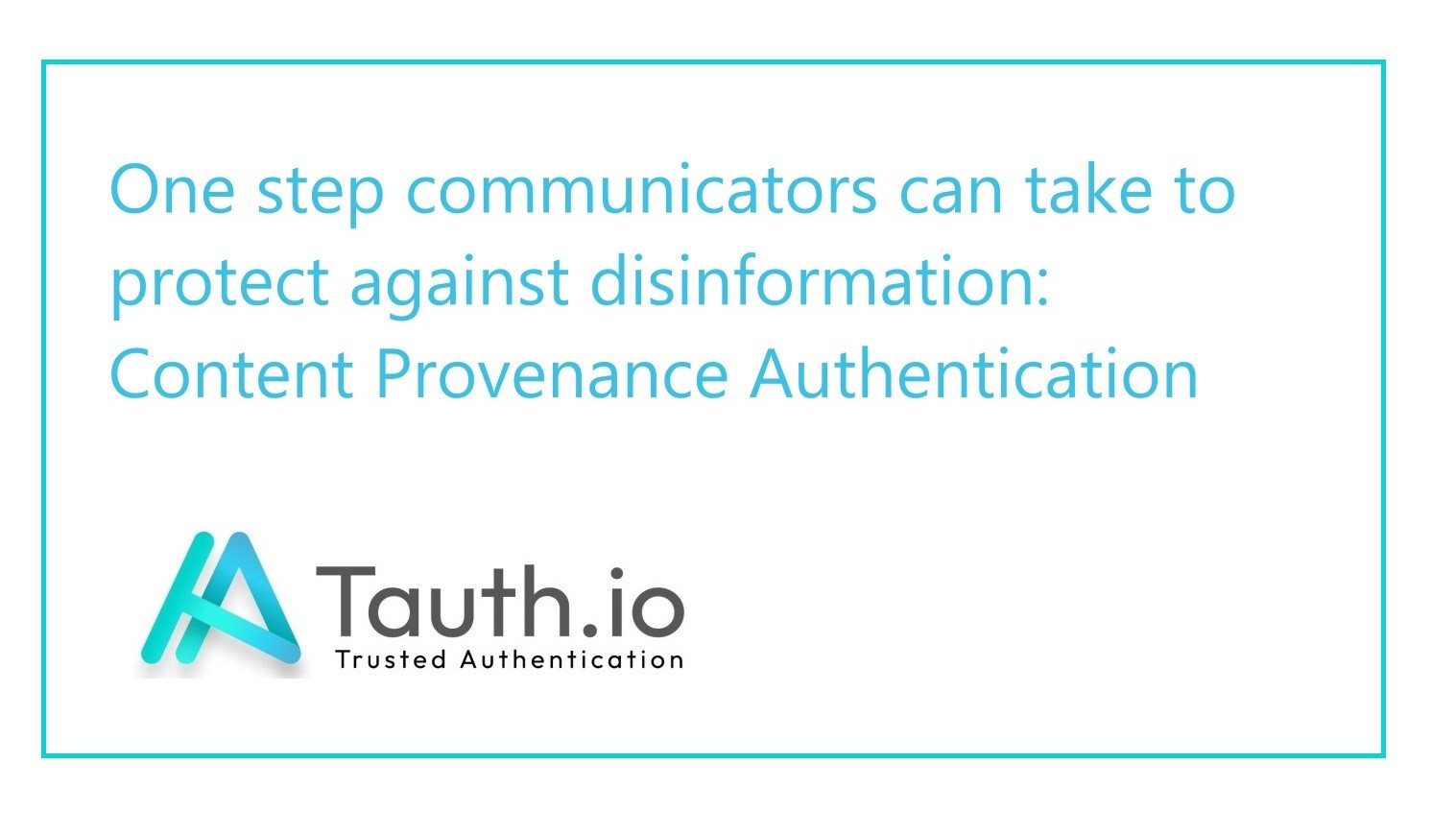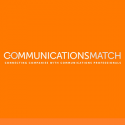Content Provenance Authentication: Using Digital Watermarks to Tackle Disinformation
In a new article for CommPRO, One Step Communicators Can Take to Stop Disinformation is to Authenticate Content, I highlight the work being done to address disinformation in the PR industry and the role content provenance authentication can play to address it. The Institute for PR’s Disinformation Awareness Commitment, for example, enlists industry professionals to combat disinformation by promoting accuracy, media literacy and accountability.
There’s no doubt that communicators have a stake in the game. It is clearly in the industry’s best interests to uphold the highest professional standards of fact-based information. Although disinformation goes far beyond the realm we control, there are specific communications-related challenges that are solvable and well within our scope.

As I note in CommPRO, wearing my hat as CEO of Tauth.io, imposter and fake content, part of the disinformation spectrum, are a significant concern for companies. AI is making it easier to create and disseminate facsimiles of high-value content, including press releases, opinion articles or white papers. As a result, the risk of financial and reputational damage from malicious actors is growing. Add to this, “the hacking of emails, social media accounts and AI-generated websites, the vehicles for content dissemination can no longer be considered truly secure.”
The world’s largest technology and media companies have been working together as part of the Content Authenticity Initiative (CAI) to develop an industry standard approach to content provenance authentication. This provides a new layer of protection against digital fraud by incorporating the identity of the creators (companies or individuals) into content to help third-parties know that it can be trusted.
As a member of CAI, Tauth.io is bringing content authentication to the communications industry. We use C2PA industry-standard authentication protocols to incorporate content credentials into press releases and other high-value documents.
By creating robust digital watermarks and logging content on blockchain, wherever a document, video, audio or other content are sent or posted, the embedded provenance can be verified by the recipient clicking the credentials link.
We are able to develop credentials for individual companies and provide tools to manage authenticated content, something that in the past was only available to a handful of governments.
Imagine for a moment that a press release has been authenticated and incorporates a digital watermark that proves that it was from the company issuing it. This simple step ensures that a journalist, analyst or client will know they can trust it. Add to this, once content has been authenticated, it will rank higher on search engines and tools that validate high-quality content. This is what the future looks like.
Authenticating the provenance of content is a simple step corporate communications and agency leaders can take to reduce the risk of disinformation from fake or imposter content. As a senior media industry executive shared on a recent call, “In three years we will be wondering how it was possible that content credentials were not included in digital documents!”
Simon Erskine Locke is co-founder of Tauth.io, a digital content authentication company. Locke is founder & CEO of communications agency and professional search and services platform, CommunicationsMatch™, and a board member of the Foreign Press Association. He is an agency founder, and has held head of communications roles at Morgan Stanley, Prudential Financial and Deutsche Bank. Contact us to set up a call to find out more about content authentication and creating custom credentials for your clients or company at [email protected].
